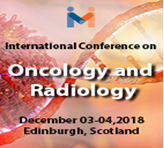Isolation and Characterization of E. coli from Food and Environmental Samples
In the present work a total 720 samples comprising of 410 stool, 280, meat and fish samples and 30 environmental samples were collected aseptically from different sources to investigate the enteropathogenic organism E. coli. All samples screened in this study yielded 157 (21.80%) isolates of E. coli. Meat and fish samples had the maximum (24.28%) of E. coli isolates, followed by human stool (20.24%) and environmental samples (19.99%). Of the meat and fish samples, buffalo meat samples yielded 33 (27.99%) isolates whereas fish yielded 10 (25%), mutton 11 (22%) and chicken 14 (19.99%) isolates. Among the environmental samples, twenty two water samples yielded 6 (27.7%) isolates whereas none of the soil sample was positive for E. coli. A representative number of E. coli isolates were subjected to virulence characterization. The result of mouse paw oedema test (MPOT) revealed that out of 14 isolates examined, Rabbit ileal loop test detected the presence of enterotoxin in CFS of 7 out of 8 isolates of E. coli supported by histopathological examination. Antibiogram of 10 strain of E.coli using 8 drugs revealed varied sensitivity pattern. Most of the isolates were resistant to three antibiotics namely ampicillin, ciprofloxacin and tetracycline. Co-trimaxazole and streptomycin were able to inhibit in vitro growth of 50% isolatets whereas gentamycin, colistin and nitrofuration were able to inhibit in vitro growth of less than 30% of the isolates.
 Spanish
Spanish  Chinese
Chinese  Russian
Russian  German
German  French
French  Japanese
Japanese  Portuguese
Portuguese  Hindi
Hindi 



